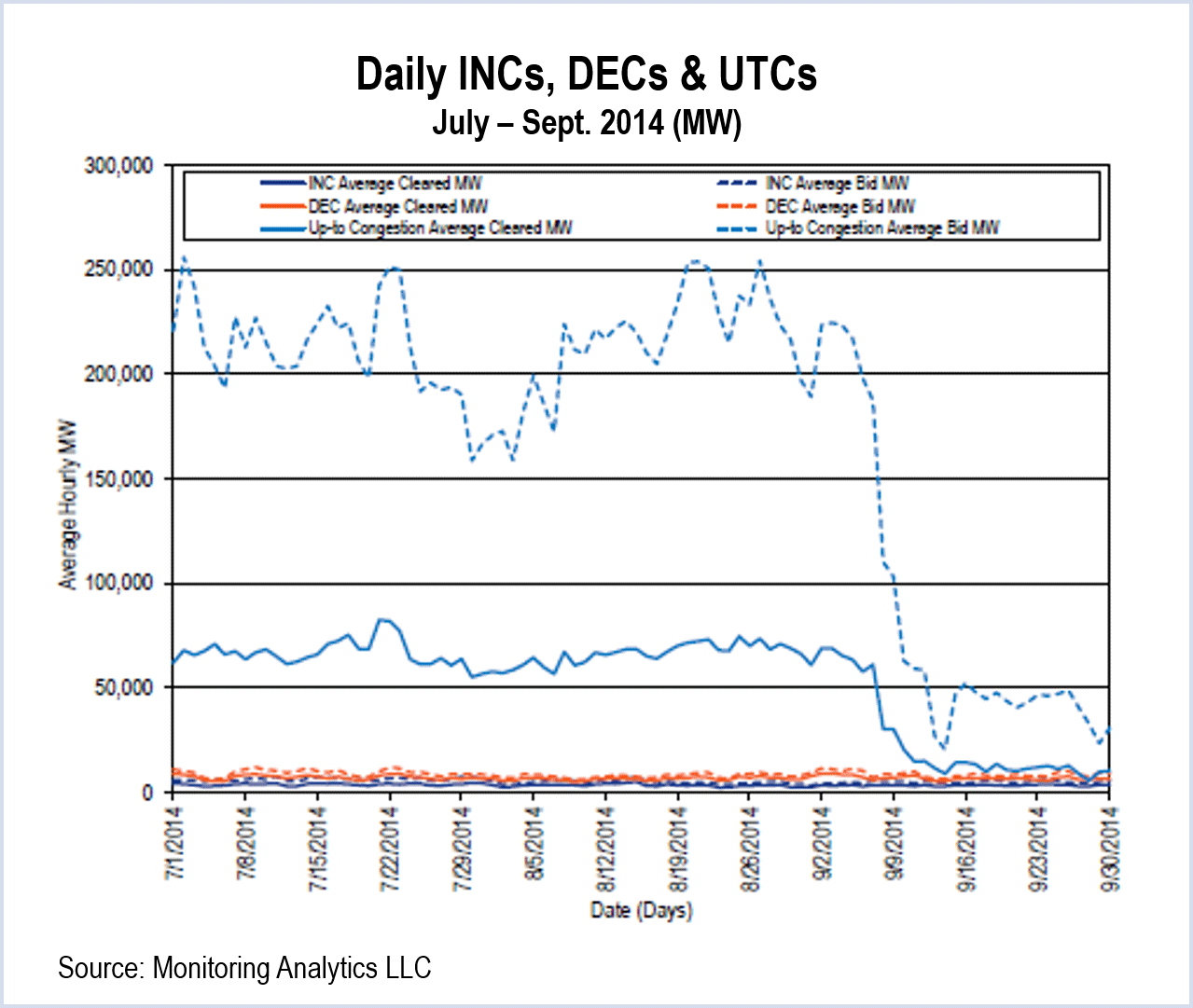Up-to-congestion trading volumes in PJM have dropped by about 85% since September, after the Federal Energy Regulatory Commission said it might make the transactions liable for uplift assessments.
The average volume of cleared up-to-congestion trades had increased 22.5% in the first three quarters of 2014, compared to the first nine months of 2013, according to the Independent Market Monitor’s third-quarter State of the Market report.
But the growth came to a halt Sept. 8, the effective date set by FERC for any uplift assessments.
Market Monitor Joe Bowring told the Members Committee webinar last week that traders appear to have begun limiting their UTC trades to the most profitable paths, as average profits have increased from $0.02 per MW in the two months before Sept. 8 to $0.94 per MW in the two months after.
Before the FERC ruling “you could make money and have a very small margin with large volumes,” Bowring said. Now, he said, traders are shunning less profitable trades that they fear will be net losers if uplift assessments are applied.
FERC ordered a Section 206 proceeding to determine whether PJM is improperly treating UTCs differently than INCs and DECs in the interpretation of a forfeiture rule and in the application of uplift charges. (See UTC Trading Falls Following FERC Order.) FERC has scheduled a technical conference on the issue for Jan. 7.
The Monitor’s quarterly report said the reduction in UTC trading has not resulted in “negative impacts … and there have been some positive impacts.” Day-ahead and real-time binding constraint hours have fallen sharply since Sept. 8.



